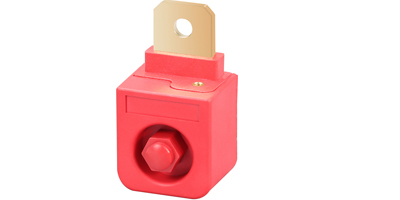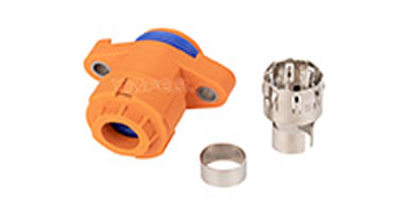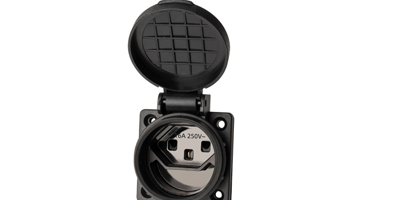In the vast expanse of inverter accessories, the High Current Terminal Connector and High Voltage Terminal stand out conspicuously. Their unique properties erect a solid bulwark for power transmission, drive efficient energy conversion, and inaugurate a new chapter of innovation.

I. Introduction
In the realm of inverter accessories, the High Current Terminal Connector High Voltage Terminal stands out with its unique characteristics. These terminals play a crucial role in ensuring the efficient and reliable operation of inverters, especially in high-power and high-voltage applications. This article explores their special traits in detail.
II. Superior Current-Carrying Capacity
2.1 Enhanced Conductor Design
The terminal is engineered with conductors of larger cross-sectional areas and superior conductive materials. For instance, high-purity copper alloys with optimized microstructures are employed. This design minimizes resistance, enabling it to handle substantial current loads. In industrial inverters powering heavy machinery, it can effortlessly conduct currents in the hundreds or even thousands of amperes without significant power losses or overheating issues.
2.2 Efficient Heat Dissipation Mechanism
To cope with the heat generated during high-current transmission, advanced heat dissipation structures are integrated. These include heat sinks with extended finned surfaces and efficient thermal conductive materials. The heat sinks are strategically positioned to maximize heat transfer to the surrounding environment. In applications where continuous high-power operation is required, such as in renewable energy inverters for solar or wind farms, this heat dissipation mechanism ensures stable performance by maintaining the terminal's temperature within a safe operating range.
III. High-Voltage Withstanding Capability
3.1 Insulation Material Innovation
The terminal features state-of-the-art insulation materials. These materials possess high dielectric strength and excellent resistance to electrical breakdown. For example, specialized ceramic or composite polymers with enhanced insulation properties are used. In high-voltage inverter systems operating at tens of thousands of volts, they effectively prevent electrical leakage and flashovers, safeguarding the integrity of the electrical circuit and the safety of the entire system.
3.2 Reinforced Insulation Structures
In addition to premium insulation materials, the terminal incorporates carefully designed insulation structures. Multiple layers of insulation with staggered arrangements and specific thicknesses are implemented. This not only provides redundant protection against voltage surges but also minimizes the risk of partial discharge. In critical power grid applications where voltage stability is paramount, these reinforced insulation structures ensure uninterrupted power transmission and prevent potential electrical disasters.
IV. Robust Mechanical Design
4.1 Anti-Vibration and Shock Resistance
The terminal is constructed with a rugged mechanical frame. It can withstand vibrations and shocks from various sources, such as the mechanical vibrations of industrial equipment or the impacts during transportation. Reinforced mounting brackets and shock-absorbing gaskets are used to enhance its stability. In applications like mobile inverter units for electric vehicles or in marine environments with constant mechanical disturbances, this robust design ensures continuous and reliable electrical connections.
4.2 Durable Terminal Interface
The terminal interface is designed for long-term durability. The contact surfaces are precision-machined and plated with wear-resistant materials like gold or silver alloys. This plating not only reduces contact resistance but also enhances the resistance to wear and corrosion. In applications involving frequent plugging and unplugging or in harsh environmental conditions, the durable interface maintains excellent electrical conductivity and mechanical integrity over extended periods.
V. Compatibility and Adaptability
5.1 Wide Range of Inverter Compatibility
These terminals are engineered to be compatible with a diverse array of inverters. They can adapt to different inverter models and power ratings, whether it's a small household inverter or a large industrial-scale inverter. Standardized connection interfaces and adjustable mounting options make them easily integrable into various inverter systems, providing flexibility for system designers and installers.
5.2 Customizable Configurations
To meet specific application requirements, the terminals offer customizable configurations. Users can select the number of terminals, their spacing, and the type of connection methods according to the actual wiring needs. This customization ability allows for optimal utilization of space and efficient electrical layout in complex electrical installations, facilitating seamless integration with other components of the inverter system.
In the field of electrical connection, terminals such as Quick Plug have their own strengths. The Square Shaped Wall-Through terminal is also unique. With its through-the-wall design and stable connection, it can collaboratively build an efficient electrical system in multiple scenarios and promote industry innovation.






